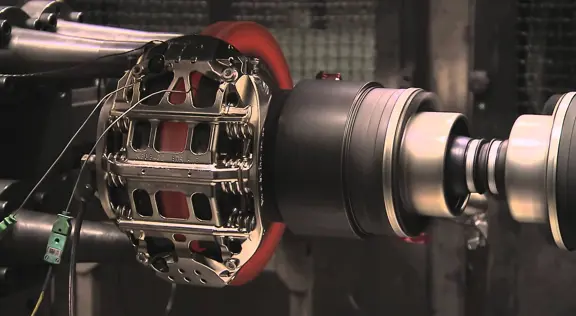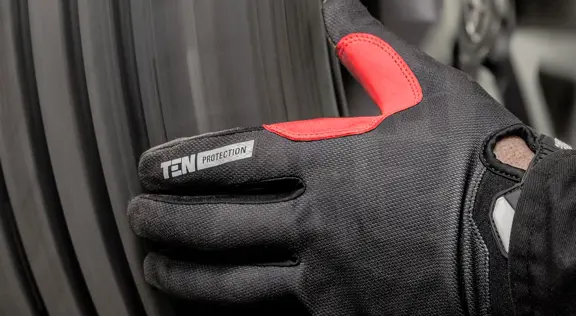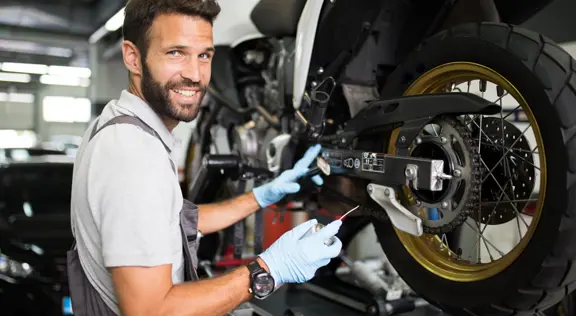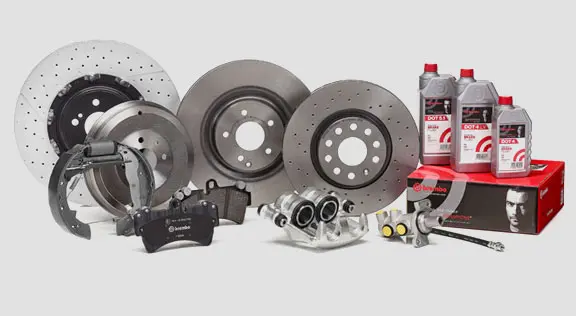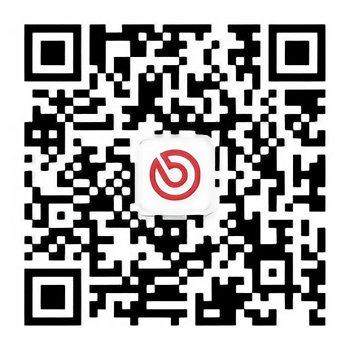
Tightening torques
The correct operation of the braking system directly depends on the correct tightening torque of the wheels.
The importance of the correct tightening torque of the wheels is often overlooked, especially when performing tyre replacements. A poorly secured wheel, as far as the correct tightening of nuts and bolts is concerned, has a lot to do with the irritating vibrations on your steering wheel when you brake and with the general malfunctioning of your braking system.
Moreover, it has serious consequences on the safety of your vehicle and passengers.
Excess or insufficient tightening of wheel bolts could potentially have catastrophic consequences. Nuts and bolts that are too tight could cause them to be deformed, elongated or even break, especially when driving over potholes or sleeping policemen.

In recent years, it has been proved that the widespread practice of using air guns or conventional electric guns, at maximum power, leads to deterioration of the threads at every installation and cause the wheel bolts to stop working properly.
In some cases, other components – such as the hub - could become damaged as the wheel bolts are tightened to it. The cause of this damage is due to the incorrect procedure of fastening of the wheel to the wheel hub, a situation which occurs more often than one would think.
This issue of incorrect wheel installation is increasing due to the ongoing evolution of vehicles.
The increase in vehicle dimensions - both in general height and the wheel size themselves – and together with the reduced size of the hub are all reasons why the wheel-brake disc-hub assembly in a modern-day car is subjected to increasing tension generated by the forces which converge at that point, compared to a vehicle dating back 20 or 25 years ago.
The irregular tightening of wheel nuts could cause the tiniest play between the hub-brake and disc-wheel assembly, which will lead to the following issues.
As the disc is pressed alternately against the brake pad and will do so more frequently after the first braking action, the pad tends to adjust its position to the brake disc, which is why more intensive vibrations could be generated.
In some cases, other components – such as the hub - could become damaged as the wheel bolts are tightened to it. The cause of this damage is due to the incorrect procedure of fastening of the wheel to the wheel hub, a situation which occurs more often than one would think.
This issue of incorrect wheel installation is increasing due to the ongoing evolution of vehicles.
The increase in vehicle dimensions - both in general height and the wheel size themselves – and together with the reduced size of the hub are all reasons why the wheel-brake disc-hub assembly in a modern-day car is subjected to increasing tension generated by the forces which converge at that point, compared to a vehicle dating back 20 or 25 years ago.
The irregular tightening of wheel nuts could cause the tiniest play between the hub-brake and disc-wheel assembly, which will lead to the following issues.
As the disc is pressed alternately against the brake pad and will do so more frequently after the first braking action, the pad tends to adjust its position to the brake disc, which is why more intensive vibrations could be generated.
The alternate contact (sometimes you can actually witness it by moving the wheel by hand) heats up one area of the brake disc more than the other. When braking, the driver will experience a vibrating sensation from the steering wheel, caused by the irregular friction contact between brake disc and pad itself due to the different temperatures generated. It is very easy to distinguish this particular problem from the more generic “distorted brake disc”. In this latter case, when the problem arises, the steering wheel vibrates but the pedal does not.
For the entire life span of that brake disc and those pads, the brake disc will be deformed, and the pads will suffer from irregular wear. Due to the deformation of the brake disc caused by the constant alternate contact, the pedal will also begin to vibrate.
For the entire life span of that brake disc and those pads, the brake disc will be deformed, and the pads will suffer from irregular wear. Due to the deformation of the brake disc caused by the constant alternate contact, the pedal will also begin to vibrate.
What is the correct tightening procedure?
Tightening of the wheels must be performed with the use of a torque wrench according to a specific tightening torque, linked to the dimensions, nuts and bolts material and to the type of threading. The tightening torque is generally indicated in the service manual of the vehicle.
You can use a conventional pulse wrench, on the lowest setting (the tool tightening torque must not exceed the required torque) or wrenches with a torque limitation function which will ensure the specified torque is not exceeded.
Using a tightening torque lower than the value prescribed can lead to loosening of the wheel bolts, while a higher torque can lead to deformation of the brake discs or breakage, in addition to the difficulty of removing the wheel bolts in case of puncture.
To ensure good contact between the wheel, the brake disc and the hub, it is advisable to carry out a “star” tightening sequence, which is tightening first nut and then the one opposite (instead of the next one along).
Star fastening examples with 4, 5 or 6 bolts:

The wheels are fitted correctly when the nuts have been tightened at the torque specified by the vehicle manufacturer and the wheel is aligned correctly on the hub.
Is there anything else you want to ask?
Contact the Brembo technical support team. Our technicians will get back to you as soon as possible!

